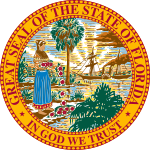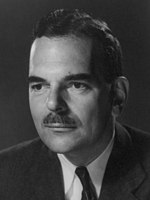| ||||||||||||||||||||||||||
| Turnout | 32.5% | |||||||||||||||||||||||||
|---|---|---|---|---|---|---|---|---|---|---|---|---|---|---|---|---|---|---|---|---|---|---|---|---|---|---|
| ||||||||||||||||||||||||||
 County Results[1]
Roosevelt 50-60% 60-70% 70-80% 80-90% 90-100%
| ||||||||||||||||||||||||||
| ||||||||||||||||||||||||||
| Elections in Florida |
|---|
 |
|
|
The 1944 United States presidential election in Florida was held on November 7, 1944. Voters chose eight electors, or representatives to the Electoral College, who voted for president and vice president.
Incumbent Franklin D. Roosevelt carried Florida by a landslide large margin of 40.64 percentage points, or 196,162 votes, over Republican Thomas Dewey, receiving Florida's eight electoral votes. This constitutes the last time that a Democratic presidential nominee has won more than 60% of the vote in Florida, as well as the last time that a Democrat has swept every county in the state.
This election marked the end of Florida's status as a one-party Democratic "Solid South" state. The subsequent combination of mass migration–especially of retirees–from the historically Republican North,[2] in addition to increasing Democratic liberalism on racial policies, would gradually turn the state into a bellwether starting in 1948. This trend was already evident in some counties in South and Central Florida, however, with Roosevelt narrowly carrying Broward County by just 5% despite winning every county by double digits in his previous 3 presidential runs.
As of 2020[update], this remains the last time that the following counties have ever supported a Democratic presidential nominee: Indian River, Lake, Lee, Manatee, Martin and Sarasota.[3] Orange County, containing Orlando, would not vote Democratic again until 2000, while Palm Beach County would not vote Democratic again until 1992, and Broward County not until 1976.[3]
- ^ "Florida Department of State - Election Results".
- ^ Daniels, Roger; Immigration and the Legacy of Harry S. Truman, p. 197 ISBN 1935503812
- ^ a b Menendez, Albert J.; The Geography of Presidential Elections in the United States, 1868-2004, p. 164-165 ISBN 0786422173

